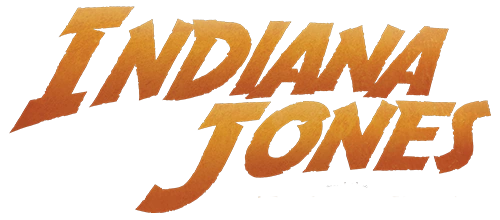No edit summary Tag: rte-source |
No edit summary Tag: rte-source |
||
| Line 56: | Line 56: | ||
== Notes and references == |
== Notes and references == |
||
{{Reflist}} |
{{Reflist}} |
||
| + | |||
[[ja:カオ・カン]] |
[[ja:カオ・カン]] |
||
| + | [[Category:Drivers]] |
||
[[Category:Characters appearing in Indiana Jones and the Temple of Doom]] |
[[Category:Characters appearing in Indiana Jones and the Temple of Doom]] |
||
[[Category:Chinese]] |
[[Category:Chinese]] |
||
Revision as of 02:59, 20 March 2017
- "Too much to drink, Dr. Jones?"
- ―Kao Kan after Indiana Jones is poisoned[src]
Kao Kan was the youngest son of the Shanghai crime lord Lao Che, and was often at his father's side as added enforcement.
Biography
Lao Che's youngest son, Kao Kan had, by 1935, instigated several scandals which were covered up only through his father's control of Shanghai's officials. As part of Lao's criminal enterprise, Kao Kan was positioned as chief lieutenant alongside half-brother Chen.
In 1935, prior to when his father was scheduled to meet with Indiana Jones to exchange Nurhachi's ashes, Kao Kan attempted to steal the artifact from Jones. The attack was unsuccessful and Kao Kan ended up with a severed forefinger.
During the subsequent meeting at Club Obi Wan, while Jones was distracted examining his payment, Kao Kan slipped poison into Jones' champagne glass. Later, Kao Kan helped cover the shooting of Indy's sidekick Wu Han by easing the gunshot victim into a chair before he died.

Kao Kan firing his Thompson.
After Chen was killed by a skewer of pigeon flambé, Kan attempted to grapple with Jones, but was flipped onto the table. As Jones lumbered around in search of the antidote, Kan opened fire in the club with his submachine gun. After Jones and Willie Scott escaped through a window, Kao Kan and his father pursued them by car through the streets of Shanghai to the Nang Tao Airport, where other agents of Lao Che took over the assignment to kill Jones.
Personality and traits
Kao Kan was an impetuous, mentally unstable sadist being groomed to lead his father's business to the top of Shanghai's criminal underworld.
Behind the scenes
Kao Kan was portrayed by the Chinese actor Ric Young in Indiana Jones and the Temple of Doom.
During the development of the film's original script, written by Willard Huyck and Gloria Katz, Kao Kan was originally going to chase Indiana Jones, Willie Scott and Short Round in a biplane. Short Round would try to shoot him with a gun from the plane of the Nang Tao Airport (which was originally going to not be owned by Lao Che). However, Willie Scott ended up destroying one biplane (because there were two biplanes) and damaging one of the motors of Indy's plane, but the smoke was going to cause Kao Kan to deviate and accidentally crash into a mountain, dying. However, this was cut and the idea of the plane chase was later recycled for Indiana Jones and the Last Crusade.[1]
During the early development of the then untitled Indiana Jones and the Kingdom of the Crystal Skull, Ric Young expressed his desire to reprise his role as Kao Kan, due the fact that several fans were asking director Steven Spielberg to bring back Roy Chiao as Lao Che for the fourth film. However, after Chiao's death in 1999, the idea of bringing back Lao and Kao was scrapped.
There is confusion over which of Lao Che's sons is which. The movie credits clearly indicate Ric Young played Kao Kan, however, the screenplay originally indentified the character's actions as those of Chen. Most sources defer to the credits, but others, such as the Indiana Jones and the Temple of Doom Sourcebook, the official website and the 2008 junior novelization of the film agree with the screenplay.
In LEGO Indiana Jones: The Original Adventures, it's possible to kill Kao Kan. The player has to use Indy's whip to take Kao Kan's gun away then use Willie Scott's super scream to kill him, or simply run him over when while 'riding' one of the gongs. However, in the end of level cutscene Kao Kan will be alive again as Indy unknowingly boards Lao Che's plane.
Appearances
- Indiana Jones and the Dinosaur Eggs
- Indiana Jones and the Temple of Doom (First appearance)
- Indiana Jones and the Temple of Doom novel
- Indiana Jones and the Temple of Doom comic
- Indiana Jones and the Temple of Doom junior novel (As 'Chen')
- Indiana Jones' Greatest Adventures
- LEGO Indiana Jones: The Original Adventures (Non-canonical appearance)
- LEGO Indiana Jones 2: The Adventure Continues (Non-canonical appearance)
Sources
- Indiana Jones and the Temple of Doom: The Illustrated Screenplay
- Indiana Jones and the Temple of Doom Sourcebook (As 'Chen')
Kao Kan's Marshall College entry on IndianaJones.com (backup link on Archive.org) (Listed under 'Chen')
- Indiana Jones: The Ultimate Guide
- Top Trumps: Indiana Jones
